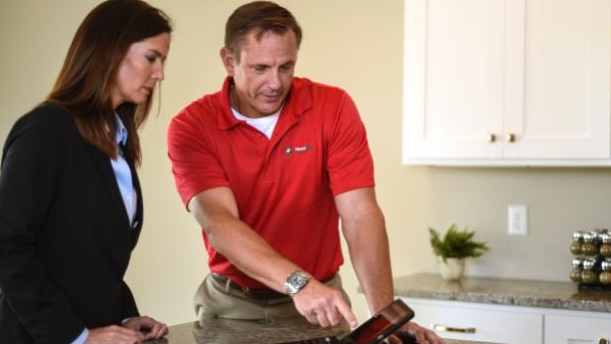How HomeTeam Inspection Service Can Help Homeowners Understand the True Value of Their New Home Warranty

An 11-month inspection allows homeowners to identify any potential problems with a newly built home and cash in on their one-year builder’s warranty before it’s too late.
When a new home is constructed, the builder, owner and sometimes an inspector complete what is broadly referred to as a “blue tape walkthrough” to flag any major concerns before move-in. While this can be a great way to identify potential issues with the home, most builders also offer a one-year warranty on new construction. This allows the homeowner to receive support in fixing any problems that may arise during the first year. The best way to make the most of this warranty is to enlist a qualified home inspector to complete an 11-month inspection.
“If you’re buying a home from a builder, inevitably, there are things that will settle. There are things that you won’t realize are improperly done,” explained Ron Riley, the owner of HomeTeam Inspection Service of East Valley, Arizona. “By having an experienced
inspector go in and review the home to prep for that one-year builder warranty, what you’re doing is uncovering and elevating those issues so that they can be fixed by the builder as opposed to it being a problem that the owner inherits after that first year.”
The Value of the 11 Month Timeline
Though homes go through several walkthroughs, inspections and other evaluations prior to sale, it is not uncommon for some issues to slip through the cracks, especially when the home does not receive a thorough, third-party inspection prior to closing.
“In the case of new homes, there are a lot of folks who have come in and signed off on the building. In order for everything to be finalized, everything must be ‘up to code,’ so at that point in time, the city or municipality comes to ensure the building is exactly the way it should be,” Riley explained. “What some people don’t understand is that, while city inspectors and municipality inspectors are knowledgeable and thorough, they also have about 25 or 30 inspections to do in a day. They might spend 10 minutes on a particular site. There are specific things they’re trained to look at, then they sign off on that particular phase and move on to their next inspection.”
Even after pre-move-in inspections have been cleared, new builds are susceptible to further changes throughout their first year of being lived in.
By nature, homes settle in and things change throughout the years. After the first year, the structure has lived through the full range of seasons its geography experiences, and any settling that is specifically associated with temperature and moisture is likely to have already occurred.
Things like doors and windows that do not close properly, interior drywall cracks, exterior stucco damage and roof-related problems can pose both functional and cosmetic problems. When identified by a home inspector, these issues can be appropriately addressed by the builder before the home warranty expires.
“People ask us, ‘Hey, have you ever done an inspection and not found anything?’” Riley said. “And the answer is no. When we go and take a look at a property, there are two of us on site for a couple of hours. There are always things that come up. Once a property is buttoned up and the keys are handed over to the buyer, there are still so many systems involved and potential issues that can occur. The home continues to settle in a variety of ways.”
Secure Your 11 Month Inspection on Time to Make the Most of Your Warranty
The 11 month inspection, when timed appropriately, allows the homeowner to identify the largest number of potential problems while remaining within the designated time frame for builders to foot the bill.
“I applaud people who have had all three inspections — a drywall inspection, the pre-close inspection and the 11 month inspection,” Riley said. “But there are some people who have never had an inspection done on their new build at all, and their first third-party inspection is the 11 month inspection. That’s still very important because we’re going to be able to uncover the cosmetic issues that may have occurred in the first 11 months, but we’re also going to be testing out all of the systems and checking the things that we would have checked at the pre-close stage to verify that they are correct.”
In order to ensure that the inspection is completed on time, the homeowner should be aware of their anniversary date and when the builder will need any repair-related information. However, completing an inspection too early can lead to a report that does not include all of the potential problems that may arise in the first 11 months.
“My recommendation is that we definitely don’t want to wait until the last day. We want to make sure that the report is in the hands of the builder in plenty of time so that they’re able to take care of things,” he explained. “If we can target somewhere around the 11 month mark, we’ll do the inspection and that will leave time for us to provide the report to the homeowner and for them to pass that along to the builder.”
For example, if the anniversary date for the home is June 1, HomeTeam will target May 1 for the inspection date, allowing for as much negotiating as possible without risking a missed deadline. Though HomeTeam does not interface with the builder directly, the inspectors provide a report and list of actionable items to the homeowner, who can then pass this information along to the builder in order to take advantage of their one-year warrant



